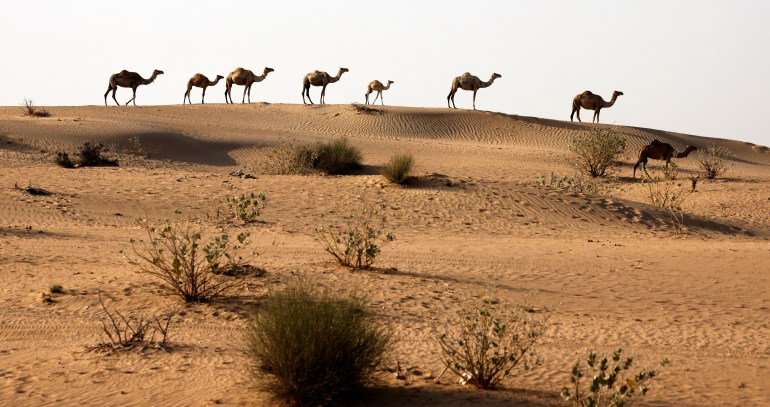Scientists have shed light on how single-humped Arabian camels managed to survive for weeks in the desert without drinking water.
In his report, published by the American magazine "Newsweek", author Aristos Georgiou said that a team led by researchers from the University of Bristol in the United Kingdom studied how the kidneys respond in the bodies of these animals when chronically dehydrated.
The ability of the camel's kidneys to produce highly concentrated urine is one of the factors of its adaptation (French)
Cholesterol in the kidneys
In a study published in Communications Biology, the team analyzed how thousands of genes change in camel kidneys as a result of dehydration.
They found that one of the main adaptations that enable camels to survive for a long time without water is the ability of the kidneys to excrete highly concentrated urine, thus ensuring little water loss.
In the latest study, the team found that the level of cholesterol - a waxy type of fat or grease - in camels' kidneys plays an important role in maintaining water in their bodies.
"Reducing the amount of cholesterol in the kidney cell membrane would facilitate the movement of solutes and water through different sections of the kidneys, a process necessary for efficient water reabsorption and higher urine production," said lead authors of the study, Fernando Alvira i Irazoz and Benjamin Gillard, from Bristol Medical School. concentration, thus avoiding water loss.
The authors added, "This is the first time that cholesterol level has been directly linked to water conservation in the kidneys, and thus we discover a new role for this type of fat, which may be important in studying other types."
The Arabian camel is one of the most important animal species in arid and semi-arid regions (French)
dromedary
Researchers say that there is a renewed interest in the mechanisms that enable camels to survive in severe drought conditions, in light of the current situation of climate change and the spread of desertification in some regions of the world.
The writer Aristos Georgiou mentioned that the Arabian camel is one of the most important animal species in the arid and semi-arid regions of North and East Africa, the Arabian Peninsula and Iran.
Experts believe that camels were domesticated about 6,000 to 3,000 years ago. At that time, camels were used for carrying luggage and transportation, and as a source of milk and meat. To this day, these animals help provide the basic needs of millions of people in these areas.
The complex shape of the camels' sinuses allows them to recover water when exhaling (French)
Food, water and breathing
In addition to the kidneys that have a high ability to adapt to the harsh environment, the Arabian camels are also characterized by many other characteristics and behaviors that help them to withstand under arid conditions.
For example, these animals feed only on plant leaves, mate only in the coldest winter season, and are able to drink very large amounts of water at once when water is available.
The complex shape of their sinuses allows them to recover water when exhaling. In addition, dehydrated camels can fluctuate wildly between day and night, allowing them to save more than a gallon (about 3.7 liters) of water per day, which would otherwise have been the case. Camel loses it by sweating.

